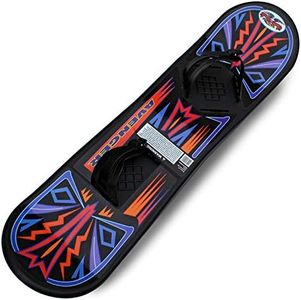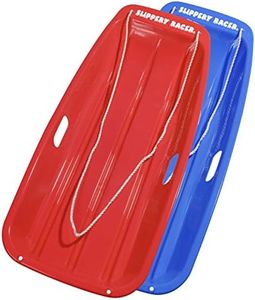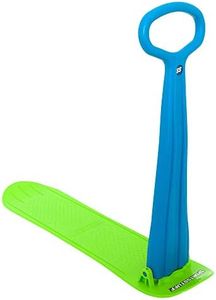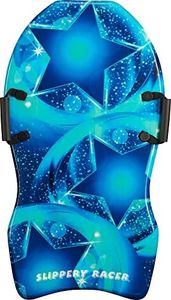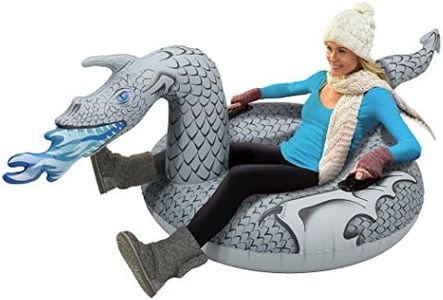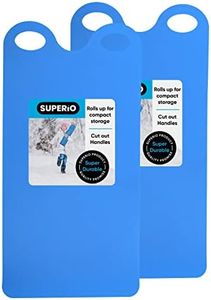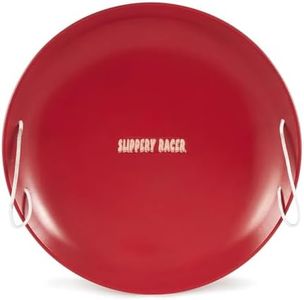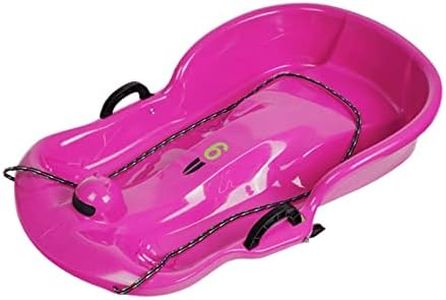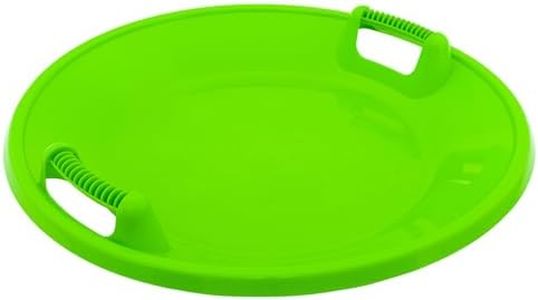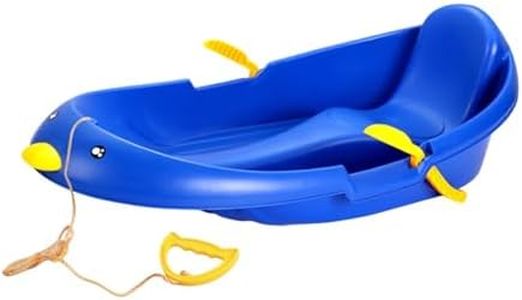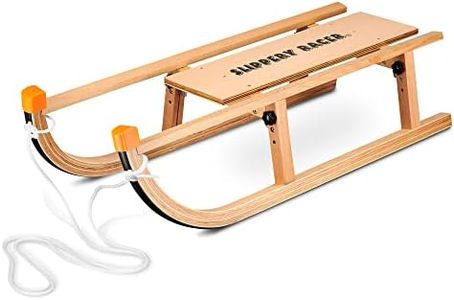We Use CookiesWe use cookies to enhance the security, performance,
functionality and for analytical and promotional activities. By continuing to browse this site you
are agreeing to our privacy policy
10 Best Sleds For Kids
From leading brands and best sellers available on the web.Buying Guide for the Best Sleds For Kids
Choosing a sled for kids can be a fun process, especially when you know what to look for. The key is to think about the age of the child, where the sled will be used, and how easy it is to use and carry. Sleds come in various designs and materials, each with its own set of strengths. It's important to pick something safe, durable, and right for the child's experience level as well as the local conditions, such as the type of snow and size of hills. By considering a few important features, you can find a sled that will provide hours of safe winter fun.Type and ShapeThe type and shape of a sled determine how fast it will go, how easy it is to control, and what kind of snow or hill it works best on. There are flat plastic sleds, toboggans, saucers, and even more rugged steerable sleds. Saucer sleds are round and spin, which can be thrilling for older kids but harder to control for young children. Traditional toboggans are long and work well for carrying more than one person but can be bulky. Steerable sleds with runners or built-in brakes offer more control and work best on packed snow or ice. When picking a sled, match the shape to the child's age and experience, and think about whether you need something for speed, control, or group use.
MaterialSleds are commonly made from plastic, foam, wood, or metal. Plastic sleds are lightweight and affordable, but can crack in very cold temperatures. Foam sleds are softer, offering a more comfortable ride and good shock absorption, while wooden or metal sleds are sturdy and classic, often lasting for many years but they can be heavy and may require more maintenance. For very young children or frequent crashes, foam and thick plastic are safer; wooden sleds are best for those wanting durability and a traditional look. Think about how rough your play will be and choose a material with the balance of safety, weight, and durability that makes sense for you.
Size and Weight LimitThe size of a sled and its weight limit will determine who can use it and whether friends or siblings can ride at the same time. Small sleds are best for single, younger children, while larger ones can accommodate more riders or bigger kids. It's important not to overload a sled past its recommended weight for safety reasons. Check the age and weight guidelines provided so you select a sled that fits your child comfortably and safely, considering room for growth or sharing.
Handles and Grip FeaturesHandles, grip areas, or textured surfaces help kids hold on as they sled down a hill, making the ride safer and helping with steering. Some sleds feature sturdy built-in handles, while others rely on molded-in grip areas or ropes. For young children and beginners, look for sleds with easy-to-grab handles to prevent falls. More advanced riders may prefer a sled with slicker sides for more speed, but should still have some way to hang on during fast rides.
Safety FeaturesSafety is especially important for kids' sleds. Features like rounded edges, padded seats, seat belts, or low-to-the-ground designs reduce the chance of injury. Some sleds include brakes or steering mechanisms for added control. When picking a sled, think about the age and coordination skills of the rider and choose a sled that offers appropriate safety features for peace of mind and accident prevention.
Portability and StorageHow easy it is to carry and store the sled can make a big difference, especially if you need to walk to your sledding spot or if storage space is limited at home. Lightweight and stackable plastic or foam sleds are easiest to manage, while wooden and metal sleds are heavier but sometimes fold or come apart for transport. Consider the child’s ability to carry the sled themselves, and where it will be stored when not in use.
